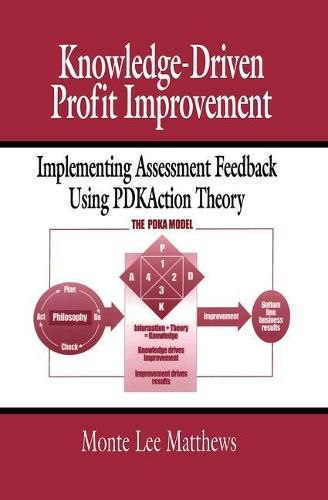Readings Newsletter
Become a Readings Member to make your shopping experience even easier.
Sign in or sign up for free!
You’re not far away from qualifying for FREE standard shipping within Australia
You’ve qualified for FREE standard shipping within Australia
The cart is loading…






This book presents an innovative and radically logical way of thinking about organizational knowledge and competition that centers on discipline, integration and focus. By tapping into the previously unrealized strengths that lie in all companies, the author suggests that it is possible for companies to move beyond informational chaos to create focused and enticing new opportunities. The 12 step method presented in the first five chapters show you how to take information from feedback from assessments, surveys and audits, convert it into usable knowledge and get bottom line improvements. The strategy expands the plan-do-check-act (PDCA) model into a Plan-Do-Knowledge-Act (PDKA) process. The case studies provided reinforce the principles and the theory behind them. Significant challenges face any organization intent on becoming world-class by managing knowledge effectively. They can be classified into four types: making use of your information by integrating it, organizing the different forms of information into a manageable framework, focusing equal attention on your strengths and your weaknesses, developing decision-making criteria based on key company drivers.
The12 steps outlined in Knowledge-Driven Profit Improvement: Implementing Assessment Feedback Using PDKAction Theory will show you how to make your company into a world-class organization.
Features
Assists companies in becoming more competitive
Serves as a guide for companies to use when taking their feedback from assessments, surveys, and audits, then integrating the feedback, and prioritizing it so that financial and operational improvements can be made
Allows companies to use the information they have been accruing for years
Helps companies establish better business priorities for the purpose of better planning
Demonstrates the significance of improvements made by using the information gained from assessments
Contents
$9.00 standard shipping within Australia
FREE standard shipping within Australia for orders over $100.00
Express & International shipping calculated at checkout
This book presents an innovative and radically logical way of thinking about organizational knowledge and competition that centers on discipline, integration and focus. By tapping into the previously unrealized strengths that lie in all companies, the author suggests that it is possible for companies to move beyond informational chaos to create focused and enticing new opportunities. The 12 step method presented in the first five chapters show you how to take information from feedback from assessments, surveys and audits, convert it into usable knowledge and get bottom line improvements. The strategy expands the plan-do-check-act (PDCA) model into a Plan-Do-Knowledge-Act (PDKA) process. The case studies provided reinforce the principles and the theory behind them. Significant challenges face any organization intent on becoming world-class by managing knowledge effectively. They can be classified into four types: making use of your information by integrating it, organizing the different forms of information into a manageable framework, focusing equal attention on your strengths and your weaknesses, developing decision-making criteria based on key company drivers.
The12 steps outlined in Knowledge-Driven Profit Improvement: Implementing Assessment Feedback Using PDKAction Theory will show you how to make your company into a world-class organization.
Features
Assists companies in becoming more competitive
Serves as a guide for companies to use when taking their feedback from assessments, surveys, and audits, then integrating the feedback, and prioritizing it so that financial and operational improvements can be made
Allows companies to use the information they have been accruing for years
Helps companies establish better business priorities for the purpose of better planning
Demonstrates the significance of improvements made by using the information gained from assessments
Contents